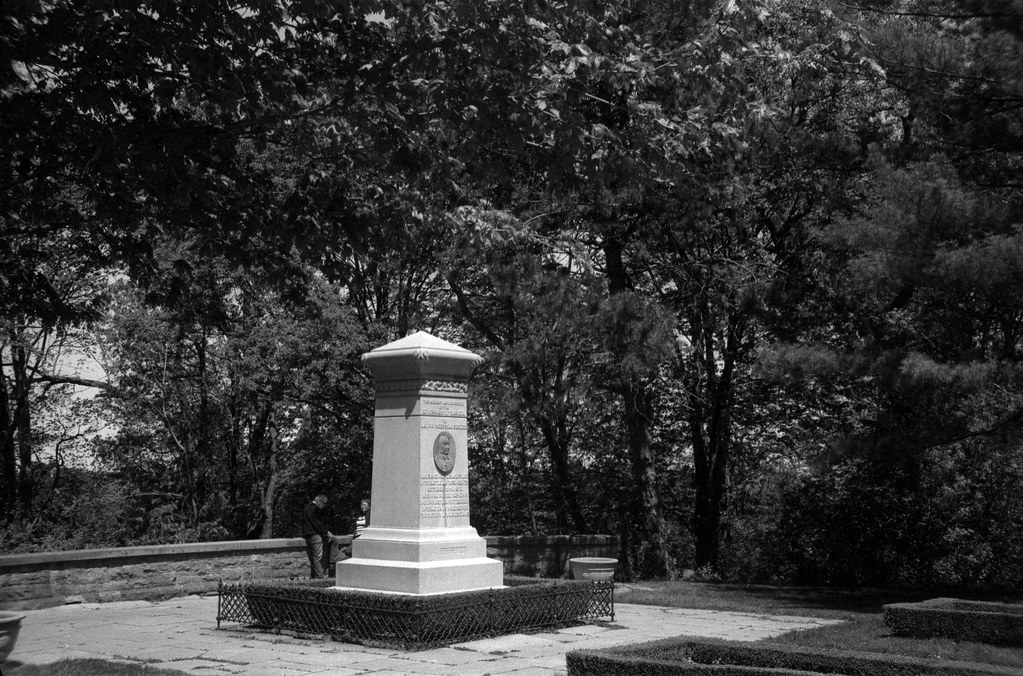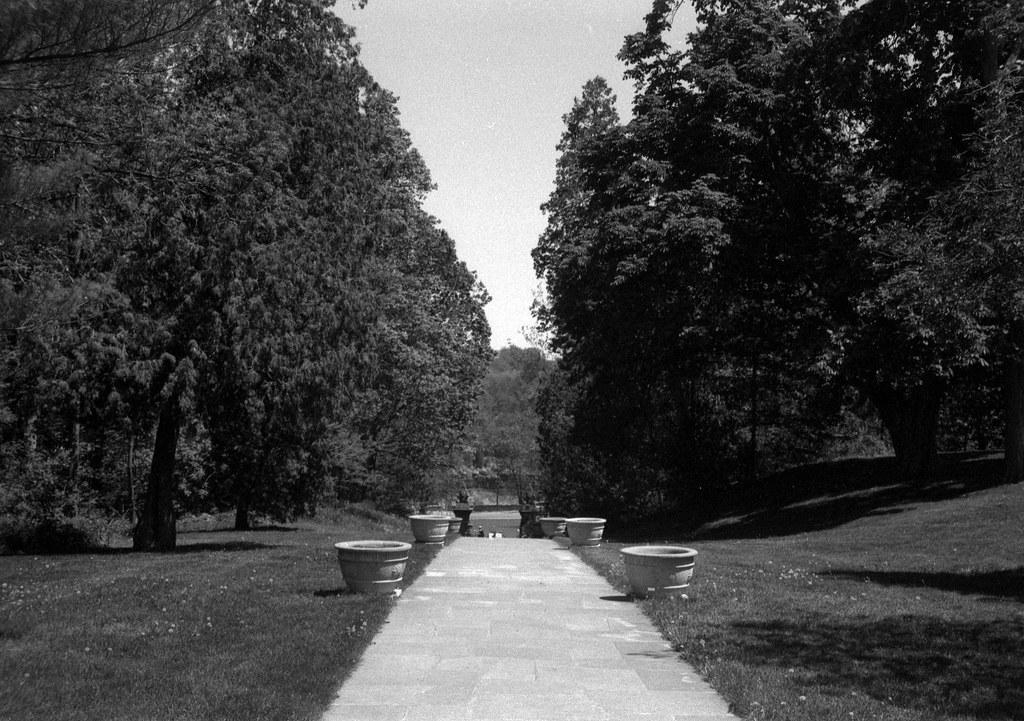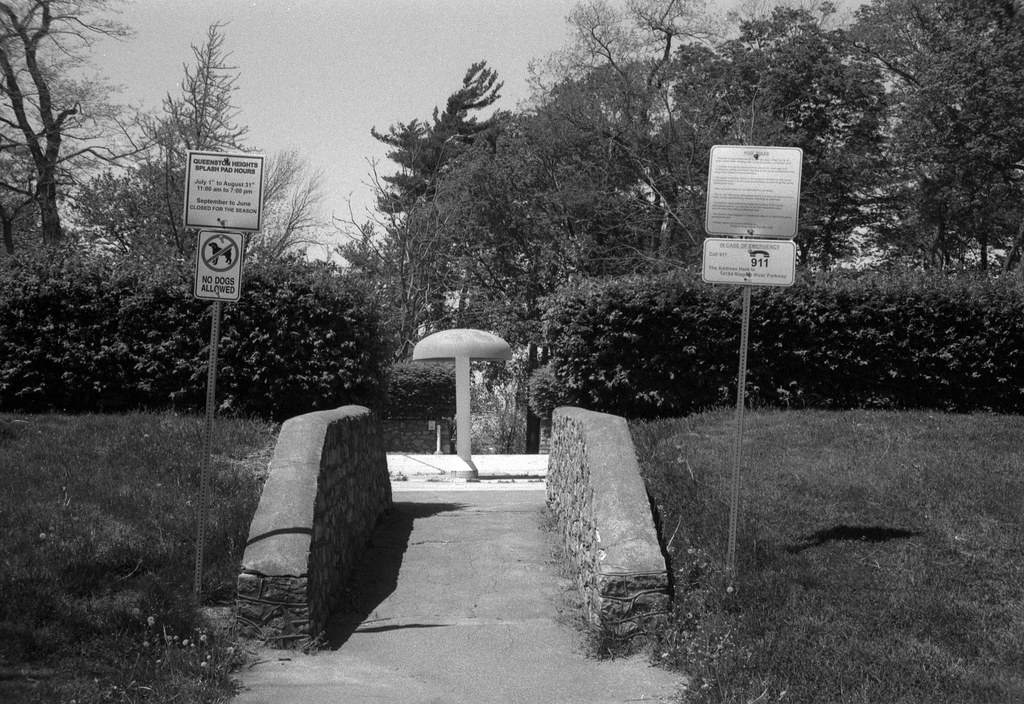At first glance, you may not be too interested in this mid-century camera. But if you look at the design, you can tell it’s mid-century, beautiful lines. But one thing that it does do, it takes excellent photos that have the feel of what we would today call a toy camera. Don’t get me wrong, when Kodak first started producing this camera they probably never thought that it would be called a “Toy Camera” by some blogger fifty-years later, but the Pony is a basic snapshot camera, the evolution of the box camera. I have to say; I was surprised by this camera. Big thanks to Dave McCullagh, my father-in-law, for this beauty. There is a bit of family history with this camera, as it was purchased by my Father-in-Law’s parents (my wife’s grandparents) in 1958 and served as the family camera for many years.
Disclaimer: This is an old review, and is scheduled for an update and may look funny during that update. However, due to a large number of reviews that require this update it may take some time. Please be patient during this process as the reviews may appear incomplete and in flux during the update procedure.

Camera Specifications
Manufacturer: Kodak
Model: Pony 135 Model C
Type: Point-And-Shoot
Format: 135 (35mm), 36x24mm
Lens: Fixed, Kodak Anaston Lens 44mm f/3.5
Shutter: Kodak Flash 300 (Leaf), 1/25 – 1/300s
Dimensions (WxHxD):
Weight: 443g
Year of Manufacture: 1955-1957
Background
George Eastman formed his photography empire for the sole reason of making photography available to the masses. Not only making it easier to create photos by making the medium more convenient but also by producing easy-to-use and understandable cameras. But the cameras were always vehicles to sell more of that media. This is seen no more clearly than the release of the original Kodak in 1888. Each new camera would often find new ways to ensure that people bought Kodak cameras, such as the subtle switch in medium format options, 120 vs. 620. Germany had always been the powerhouse in the photography world, but after the Second World War, Kodak saw an opportunity to improve its standing in the game. Post-war Germany saw their economy shattered and every major urban centre ruined after sustained Allied bombing and ground invasion in the final months of the war. Add onto this the shifting political realities as the Iron Curtain drew across Europe, and Kodak decided to start putting out more cameras aimed at the family photographer. Kodak hired its first industrial designer, Arthur H Crapsey, to kick-start this process. A former First Lieutenant in the United States Army Airforce, Crapsey served in the Eight Air Force. Wounded in a raid over Osnabruck in 1943, he was invalided out of the service in 1944. A year later, Kodak hired him to design cameras. One of his first designs was for a simple snapshot camera, the Kodak Pony. In 1949, the Pony 828 hit the market; based around a simple aluminium and bakelite body, it used a Kodak Anaston (3-Element, Tessar design) with a Luminized coating, which had to be rotated into place and a Kodak Flash 200 leaf shutter. The biggest drawback to the Pony is that it took 828 film, while the same size as regular 35mm film, it used a single sprocket hole for advance and auto stop and took a larger frame size than 135, but only fit eight shots on a roll. Engineers redesigned the internals with a new frame counter, sprocket gears, shutter gate, and a rewind mechanism and released the Pony 135 in 1950. The Pony was a bargain as a snapshot camera, costing 29.95 USD upon release, or 518.94 CAD in 2024. Add to that the ability to use proper 135 films for up to 36 exposures on a roll; the Pony was the perfect snapshot camera. Yes, Kodak produced far better cameras; at the top tier were the Retinas with German engineering, build quality with optics and shutters to match, and the mid-tier Signets with Kodak shutters and Ektar or Anastar lenses. The Ponies were good enough for the average family photographer, especially when paired with Kodachrome and Ektachrome slide films. In 1953, Kodak released the updated Model B, but when looking at the two side-by-side, there is little difference between the original and Model B. Both the Pony 135 and Pony 828 were discontinued a year later. The most significant change came in 1955 with the release of the Model C. Kodak removed the telescoping lens, replacing it with a fixed unit and keeping the Anaston design, but updating it to be a 44mm f/3.5 lens and an improved Kodak Flash 300 shutter. The Model C cost 33.75 USD on release or 519.32 CAD in 2024. Additionally, the black bakelite panels were replaced with brown ones. Production lasted until 1958, when Kodak again updated the Pony design. Released in 1958, the Pony II and Pony IV were essentially the same cameras in look but different in specs. The Pony II was the lower-tier model, with an improved 4-element Anastar 44mm f/3.9 lens with a single-speed shutter. The Pony IV used the same Anastar lens but 44mm f/3.5 specs and a Kodak Flash 250 shutter with speeds from 1/30-1/250s plus blub. Both models were discontinued in 1962, ending the Pony line.


Impressions
There’s a mid-century charm to the look of the Pony Model C, simple, clean, and symmetrical. One of the best parts about my copy of the Pony is that it is heavily used, it has character. The mixed, plastic/metal construction makes for a camera with good build quality that can handle a fair amount of damage.


Experience
I touched on the focus earlier, and it is my primary concern for this camera, being manual focus, and it is a point-and-shoot you have no easy way of setting the focus. And when I say manual focus, I mean, manual focus. The camera doesn’t even have zone icons, just straight up distances in feet. So you have to either use an external rangefinder (like what I used in a few cases) or be excellent at judging distances. Of course, if you’re close and shoot at f/11 or higher, you don’t have to worry. The one thing I did notice was that on this camera the focus helical is pretty loose and I’m sure the thing slipped on a few shots causing me to lose focus. The second major issue I have with the camera is rewinding the film. While shooting is a smooth operation, rewinding, not so much, the rewind release is a much smaller button that seems also recessed in the top plate, and you have to keep it depressed while turning the knob. The knob itself cannot constantly be turned as it is blocked on the one side by the viewfinder hump and cannot be pulled up to avoid it. So what usually is a quick procedure, often takes a lot longer than it should. The final thing is not so much a major issue, but more of an annoyance and that’s frame spacing. I’ll probably just chalk it up to age, but there were a few frames that had a separation no more than a razor’s edge between them. This makes cutting and scanning a bit of an issue.


Optics
One thing I have learned while reviewing cameras is that you don’t turn your nose up on a triplet or Tessar lens. And while these are often used in lower-spec cameras, they are powerful optics and far better than previous doublet and single-element lenses. Don’t expect stellar quality, but as the Ponies were aimed at the average shooters, they are, in fact, good enough. Yet, these days, they certainly have optical qualities that many photographers look for in lenses and often pay a premium. I’m talking about how the lens renders the out-of-focus elements. The lens itself is rated at 44mm, an odd focal length. No surprise, given the first two models used a 51mm focal length, a holdover from the original 828 film format. The 44mm is not a bad focal length. It is a weird one, but it doesn’t affect how the camera is used and is a nice halfway between the 35mm and 50mm pair with an f/3.5; you have a camera that has decent low-light capabilities. The images are sharp and contrasty, thanks to Tessar’s design. Now, once you start opening up the apertures, you get to see some of those more exciting features. First, you’ll get fall-off on your corners, starting around f/8; this gets more apparent the closer you get to wide open. And at f/3.5, you get some swirl rendering in your out-of-focus elements, provided that you hit the sweet spot. The lens itself has Kodak’s Lumenizing coating, which means that it works well with both black & white and colour films, and it makes for excellent results with slide film and punches up the contrast.


The Lowdown
The Pony is a solid camera if you look at it from a toy camera perspective rather than one for everyday use in today’s film photography world. But I will leave you with one note of caution. If you are looking at picking up a Kodak Pony be careful of the model you get, as Kodak had several. You will want to get a Pony 135 model as they take the standard 35mm film, there are also Pony 828 models that take a small roll film like what you’d find in 120/220/620 cameras which are the same height as 35mm but operate differently. You can hack the camera to take 35mm, but you’d need to salvage some backing paper to make it work properly. Frankly it’s best to just stick to traditional 35mm, it makes for a cheap, easy to shoot toy camera, in fact I might even shoot mine again for world toy camera day.
Video Review Is Coming Soon
Further Reading
Don’t just take my word on the Pony 135 Model C; you can check out the reviews by other awesome camera reviewers!
Mike Eckman – Kodak Pony 135 Model C Review
Down the Road – Kodak Pony 135 Model C Review